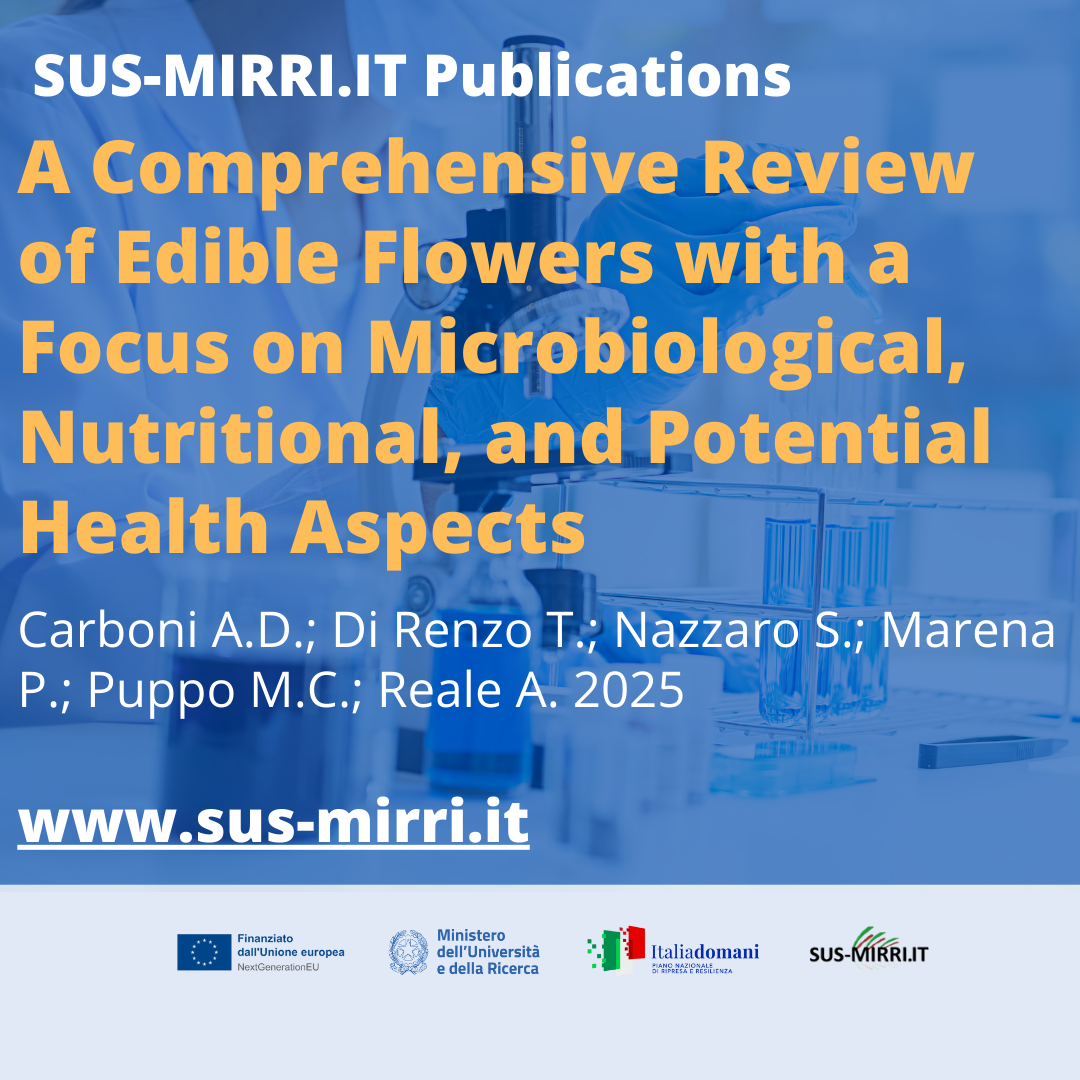Carboni A.D.; Di Renzo T.; Nazzaro S.; Marena P.; Puppo M.C.; Reale A. 2025 A Comprehensive Review of Edible Flowers with a Focus on Microbiological, Nutritional, and Potential Health Aspects. Foods 14,1719 https://www.mdpi.com/2304-8158/14/10/1719
Abstract
Edible flowers have been used since ancient times directly as food, flavoring agents, and garnish in food products, and are now reappearing in modern cuisine. Edible flowers have gained popularity due to changing consumer habits focused on healthier food options. In addition to contributing to the esthetics and flavor of various dishes, edible flowers are now recognized for their nutritional value, as they contain bioactive components with different health benefits. However, a significant concern regarding edible flowers is the potential contamination by undesirable microorganisms. Since edible flowers are often consumed fresh or minimally processed, they can pose a microbiological risk. Edible flowers may be susceptible to contamination by various pathogenic microorganisms, particularly Bacillus spp., Enterobacter spp., Salmonella spp., and Staphylococcus aureus. In addition, mycotoxin-producing fungi, such as Aspergillus, Penicillium, Alternaria, or Fusarium, can be found in various flowers. Good agricultural practices, hygienic handling, and appropriate storage are essential to reduce contamination and guarantee the safe consumption of edible flowers. Since current investigations on the microbiological safety aspects of edible flowers are scarce, this review aims to provide an overview of the consumption of edible flowers and a discussion of their uses, health benefits, and risks, focusing on microbiological aspects.
Read more at https://www.mdpi.com/2304-8158/14/10/1719



